Japanese occupation P.18-21
| Circulating Banknotes | Specimen “Specimen” | Specimen “見本” (Mihon) |
|---|---|---|
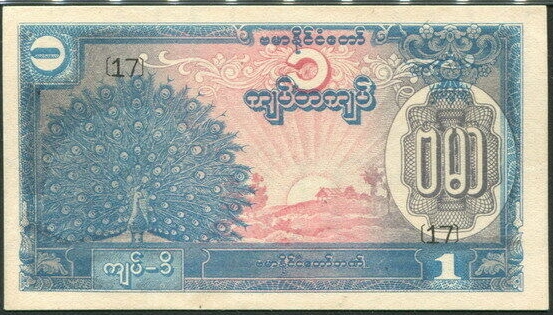 |
 |
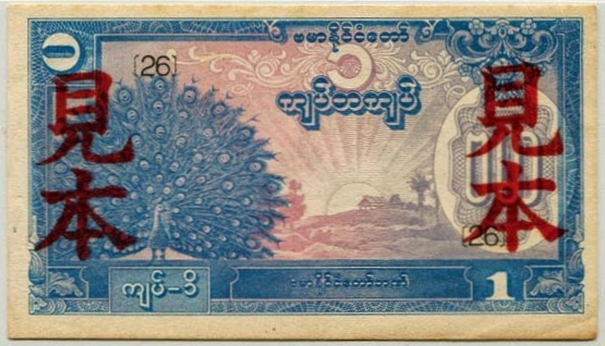 |
| - | - |  |
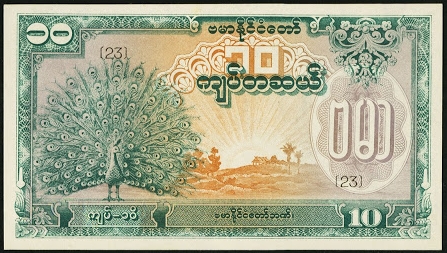 |
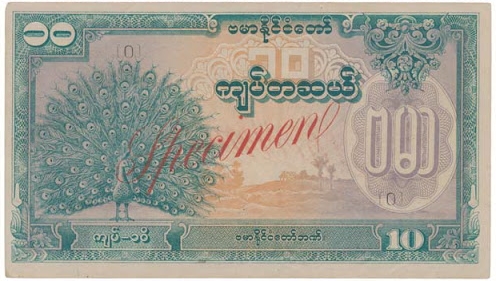 |
- |
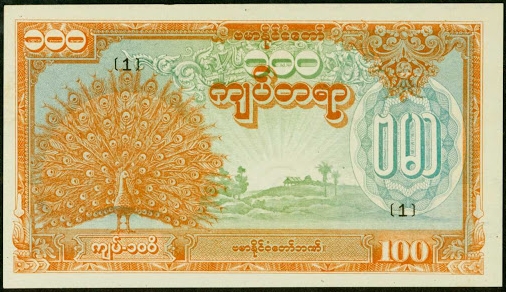 |
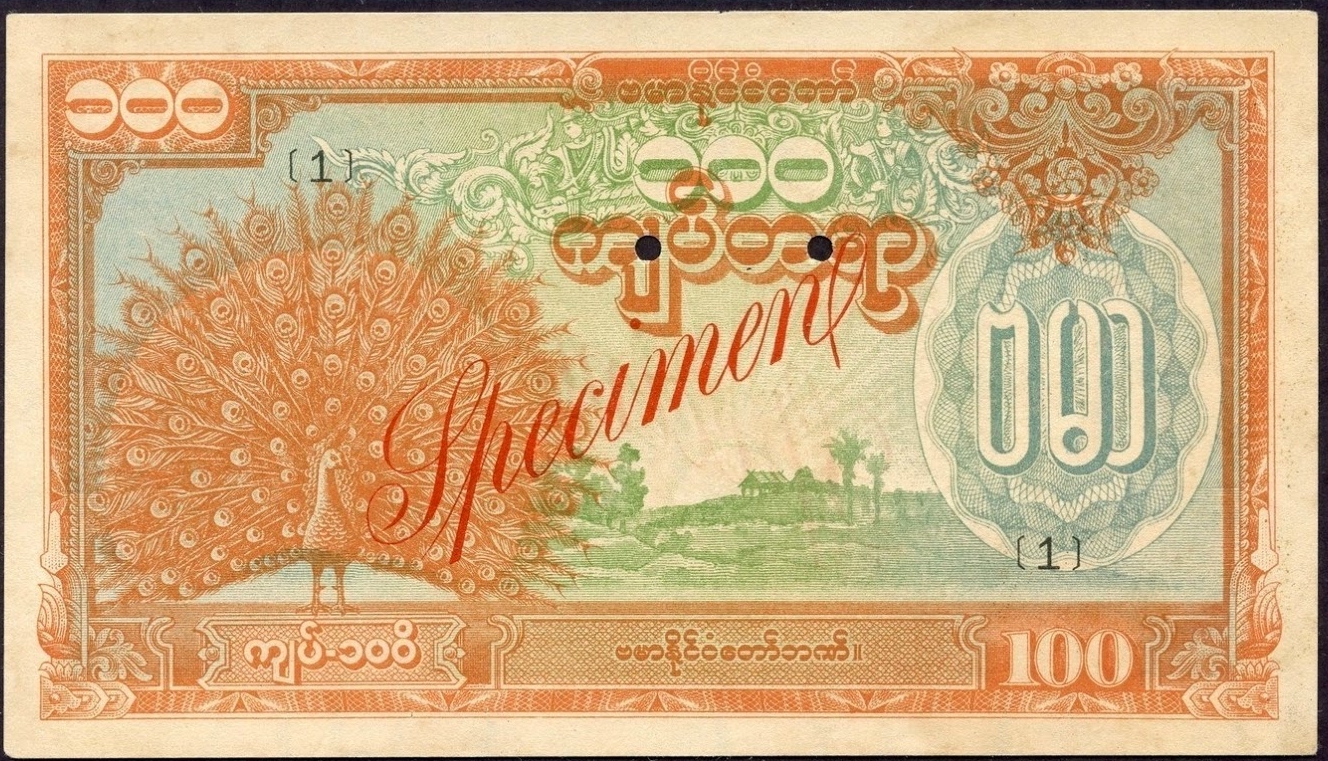 |
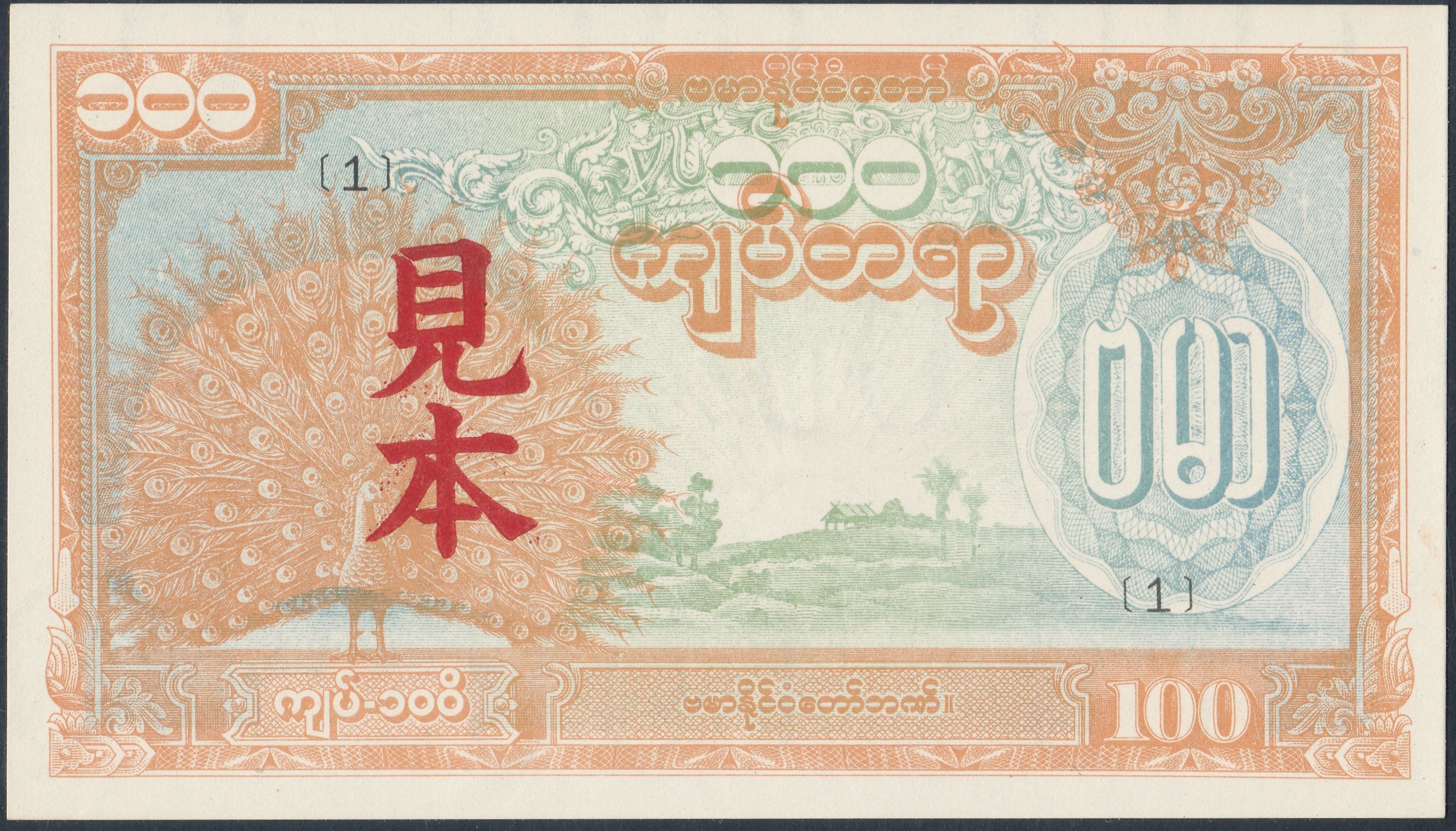 |
Burmese banknotes during the Japanese occupation period were not my research target, because almost all banknotes during the Japanese occupation period had no numbers, and it was difficult to know whether they were the same banknotes from the pictures alone, so I have not collected their data and study it. Later, I tried to collect the graded banknotes. Because of the certification numbers, I could distinguish whether they were the same or not, and then I could put them into the database. In reviewing my limited materials, these notes in the Japanese occupation period and issued by the Burma State Bank (P.18-21). Except for the 5 rupees which only has specimen “見本”, the rest have circulating banknotes, English word “Specimen” and, or Chinese word “見本”, and their quantity are quite large. Both P.18 and 19 are printed with two “見本”, P.20 has no Chinese words type specimen, and P.21 has only one “見本” printed. Later, it was found that there were two “見本” printed, but the quantity was low. Only one graded and one ungraded were found. The graded notes relative ratio compared to one “見本” could reach 15:1.
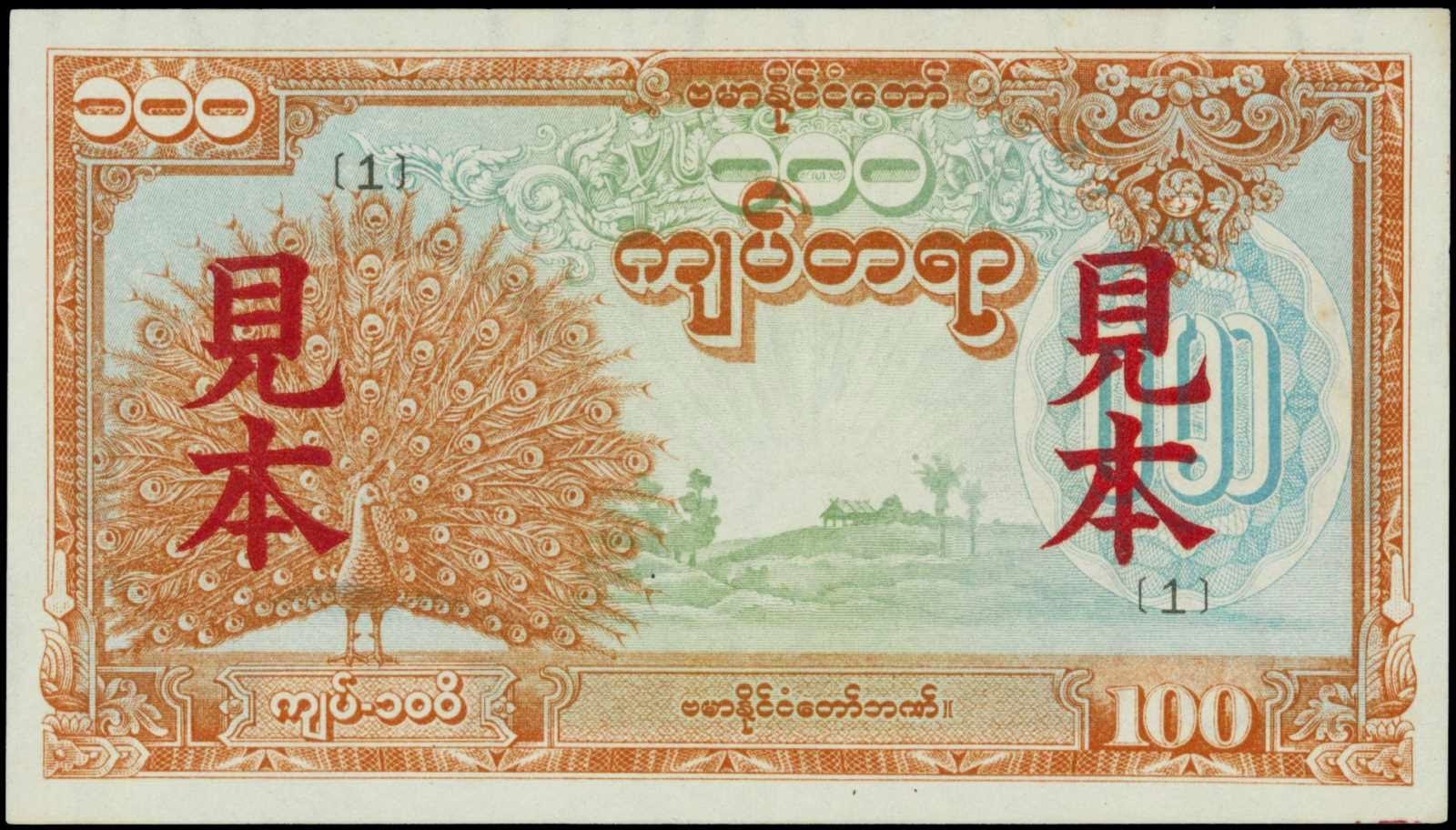
In summary, there are not many notes that have been graded and counted, but the numbers are as follows:
| Denomination | Code | Circulating Banknotes | Specimen with English “Specimen” | Specimen with Chinese “見本"x2 | Specimen with Chinese “見本"x1 |
|---|---|---|---|---|---|
| 1 | P.18 | 11 | 3 | 2 | 0 |
| 5 | P.19 | 0 | 0 | 1 | 0 |
| 10 | P.20 | 33 | 2 | 0 | 0 |
| 100 | P.21 | 27 | 32 | 1 | 15 |
Precautions:
- The information only takes graded banknotes and cannot reflect the fact. The quality and rarity will also affect whether it will be graded.
- The analysis time is short, there is no systematic investigation, and so the data only reflects the approximate.
- There may be a certain number of banknotes in Japan, which will affect results largely.